Preparing for the Ha Giang Loop requires careful consideration of the region’s variable climate, rugged terrain, and limited services along the route. Knowing exactly what to pack for the Ha Giang Loop can make the difference between a challenging journey and an unforgettable adventure. At Phieu Travel, we’ve guided countless travelers through these spectacular mountain roads, and we’ve compiled our expertise into this comprehensive packing guide. From essential documents to practical clothing choices, this article covers everything you need to make your northern Vietnam adventure comfortable and worry-free.
1. What to Pack for the Ha Giang Loop: Essentials for Every Traveler
Before diving into the detailed sections, here’s a quick overview of what you’ll need for your Ha Giang journey. This master list covers all the essentials, regardless of whether you’re exploring the loop in summer heat or winter chill.
The Ha Giang Loop presents unique challenges with its remote location and changing elevations. Some stretches climb above 1,500 meters, where temperatures can drop significantly even in summer months. Local facilities are minimal in many areas, especially between the main towns of Yen Minh, Dong Van, and Meo Vac.
Most travelers find a carefully curated packing strategy works best: bringing just enough without overloading themselves. Remember, you’ll likely be on a motorbike for several days, so each item should earn its place in your bag.
1.1 Travel Documents and Money
When venturing into Vietnam’s remote northern frontier, having the right documentation isn’t just convenient it’s essential. Border police checkpoints are common in this frontier region, and proper identification is regularly requested.
- Passport and visa: Always carry your original passport with a valid Vietnamese visa. This is non-negotiable as you’ll be traveling near the Chinese border where security checks are frequent.
- Driver’s license and International Driving Permit (IDP): Vietnamese law requires a Vietnamese driving license to legally operate a motorbike. However, many travelers use an International Driving Permit alongside their home country license. This doesn’t make it technically legal but helps in case of police checks.
- Travel insurance: Comprehensive travel insurance that explicitly covers motorbike riding is crucial. The Ha Giang Loop features winding mountain roads with occasional landslides and challenging conditions. Print your policy details with emergency contact numbers.
- Copies of essential documents: Store digital and physical copies of all important documents separately from the originals. This includes passport, visa, insurance policy, and license.
- Cash in small denominations: ATMs are scarce beyond Ha Giang City, and credit cards are rarely accepted in smaller towns and villages. Bring enough Vietnamese dong for your entire trip around 500,000 to 1,000,000 VND ($20-40) per day should cover accommodation, food, and fuel.
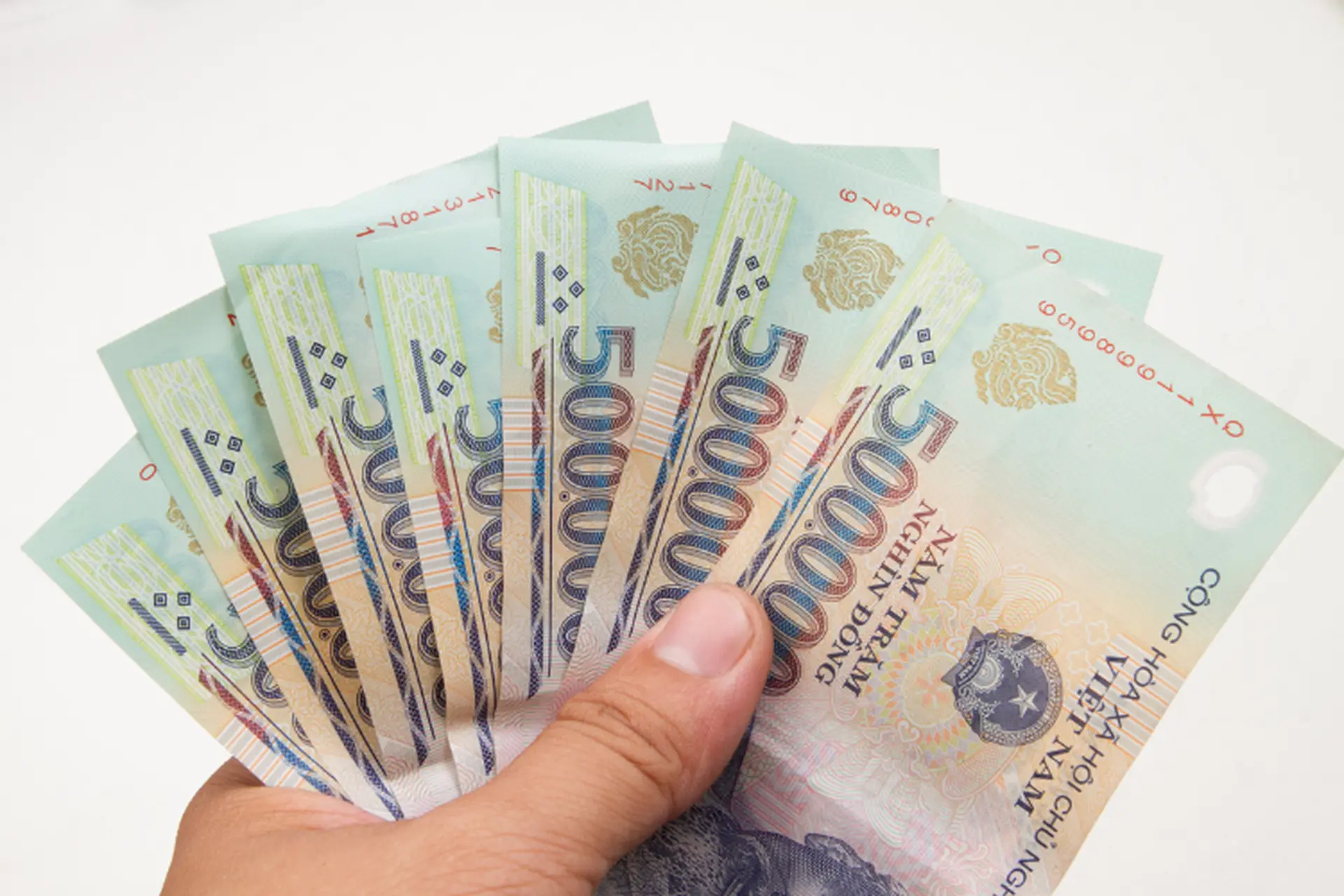
1.2 Clothing for All Seasons (Layering Strategy)
The key to comfort on the Ha Giang Loop is layering. Temperatures can vary dramatically from sweaty afternoons to chilly mornings, especially at higher elevations.
- Base layers: Pack 2-3 comfortable pants or leggings that allow easy movement on the motorbike. Choose quick-dry materials rather than jeans, which become uncomfortable when wet. Include 2-3 t-shirts or tops that wick moisture away from your body.
- Warm layers: Even in summer, evenings can be cool in the mountains. Bring a long-sleeve thermal top, a lightweight fleece, and a jacket or windbreaker. If traveling between November and February, add a warmer jacket, gloves, and a scarf or buff to protect against cold winds.
- Waterproof gear: A quality rain jacket is essential year-round. Rain can appear suddenly in the mountains, and misty conditions are common. Many experienced travelers also recommend waterproof pants or a poncho that can cover both you and your backpack.
- Sleepwear: Pack light pajamas or comfortable clothes for homestays and guesthouses. Many accommodation options can be basic, and rooms may not be heated in winter.
- Swimwear: Several beautiful waterfalls and swimming spots dot the Ha Giang Loop, particularly around Du Gia. A lightweight swimsuit takes up little space and offers a refreshing break from dusty roads.
- Underwear and socks: Bring enough for your entire journey, as laundry facilities are limited. Quick-dry materials are best, especially during rainy season.
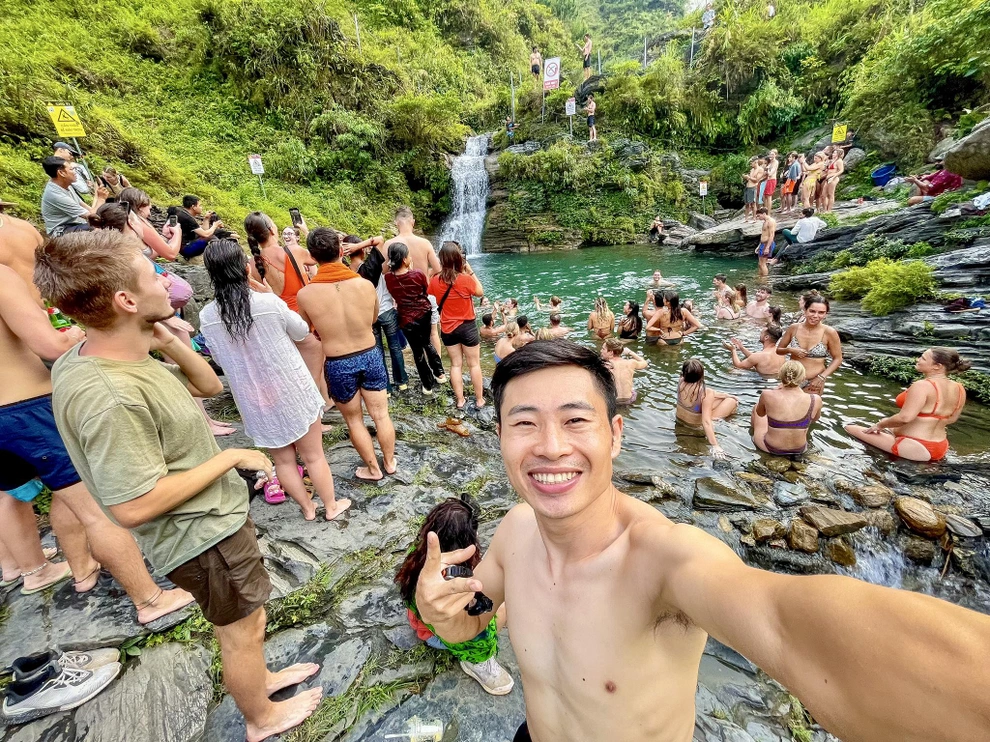
1.3 Footwear
Proper footwear balances protection while riding with comfort during stops and explorations.
- Closed-toe shoes: A sturdy pair of sneakers or lightweight boots offers protection when riding and support for short hikes to viewpoints. Ankle support is beneficial but not essential if you already have comfortable shoes.
- Sandals or flip-flops: These are perfect for evenings at homestays, where removing outdoor shoes is customary. They’re also useful for shower facilities and water activities like the Nho Que River boat ride.
- When choosing footwear, prioritize options that won’t cause discomfort during long riding days. New or untested shoes might lead to blisters that can make your journey uncomfortable.
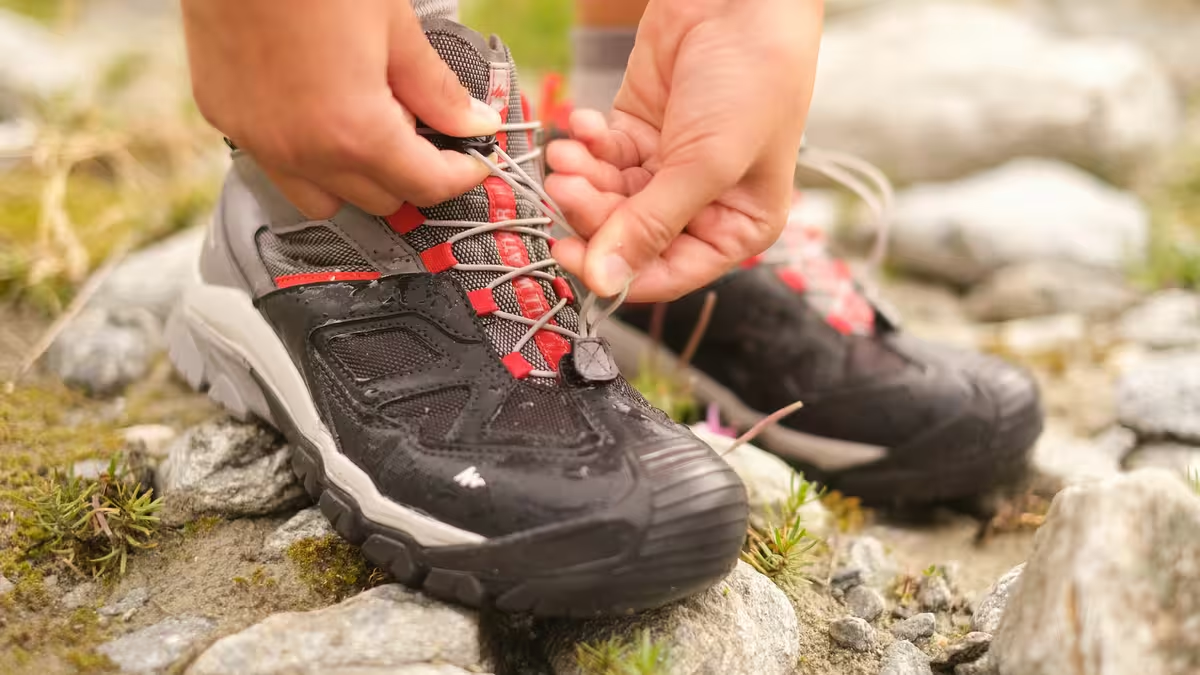
1.4 Toiletries and Hygiene
Toiletries should be compact and practical, as bathroom facilities along the loop vary widely in quality and amenities.
- Basic essentials: Pack travel-sized toothpaste, toothbrush, deodorant, and any personal hygiene items you use daily. Minimize liquid products to save space and prevent leaks.
- Shampoo and body wash: Small bottles or solid bars work well. Many guesthouses provide basic soap, but quality varies dramatically.
- Facial care: Simplified versions of your usual routine cleanser, moisturizer, and sunscreen are the basics. The combination of sun exposure and dust makes skin protection particularly important.
- Toilet paper and wet wipes: Absolute essentials for the Ha Giang Loop. Many toilets, especially in rural areas, don’t provide paper. Biodegradable options are best for environmental reasons.
- Hair management: Hair ties, clips, or headbands help manage hair under helmets and in windy mountain conditions. A small brush or comb keeps you looking presentable despite helmet hair.
1.5 Health, Safety & Sun Protection
Medical facilities are extremely limited along the Ha Giang Loop, making preventive health measures and a good first aid kit essential.
- First aid kit: Include pain relievers (ibuprofen/paracetamol), bandages, antiseptic wipes, blister plasters, and any personal medications. Motion sickness remedies can be helpful for winding mountain roads.
- Sunscreen: The mountain sun can be intense, especially at higher elevations. Bring SPF 30+ and reapply frequently, even on cloudy days.
- Insect repellent: Mosquitoes are common, particularly in summer months and around water sources. Products containing DEET offer the most reliable protection.
- Sunglasses: These protect your eyes from sun, wind, and dust while riding. Polarized lenses improve visibility in changing light conditions.
- Earplugs and sleep mask: Homestays can be noisy with thin walls, and curtains may not block early morning light. These small items can dramatically improve your sleep quality.
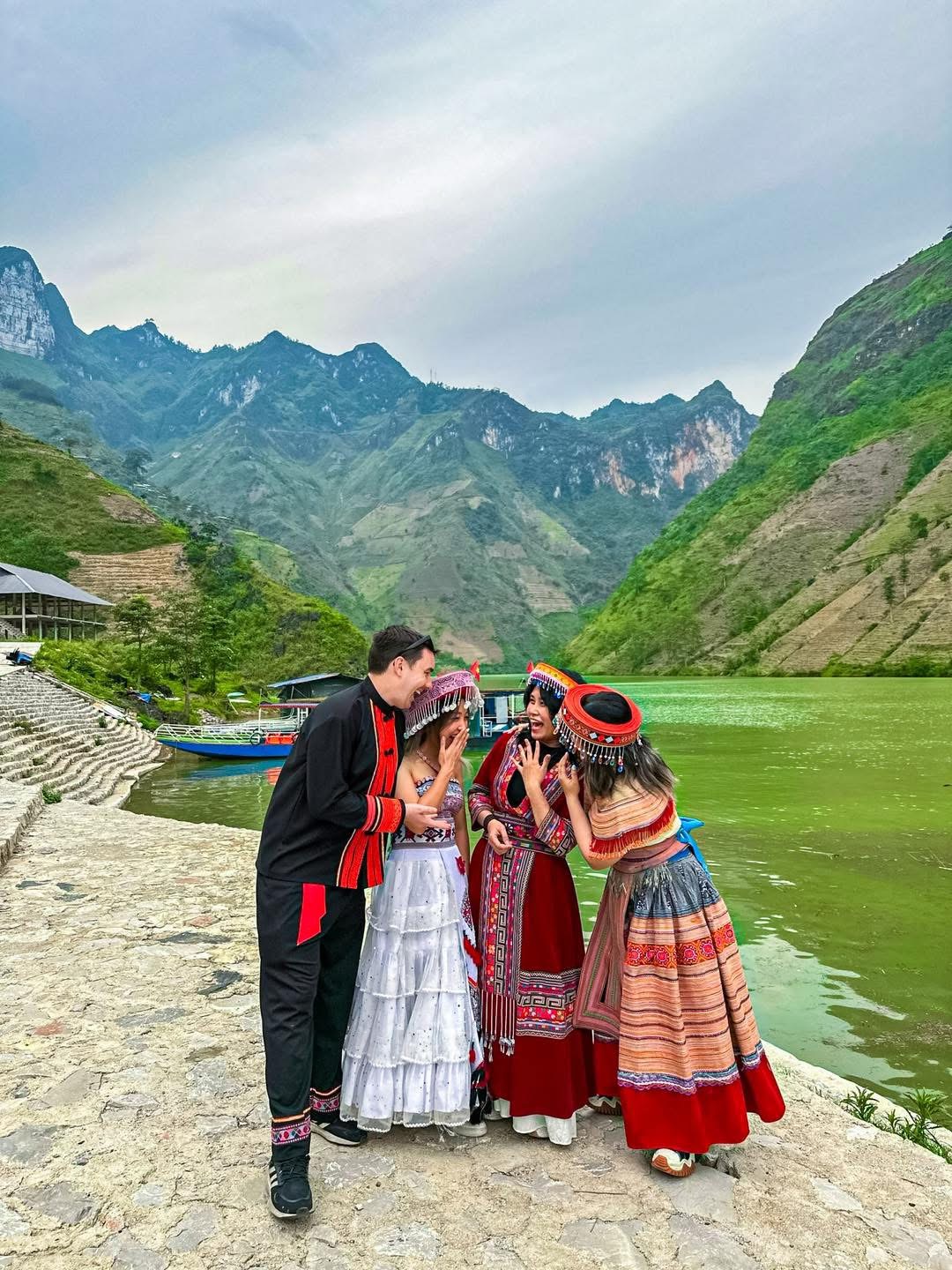
1.6 Electronics and Accessories
While the Ha Giang Loop offers a chance to disconnect, certain electronics remain essential for navigation and capturing memories.
- Phone and camera: Your smartphone likely serves multiple purposes communication, navigation, photography, and translation. A dedicated camera is optional but valuable for capturing the loop’s spectacular scenery.
- Chargers and power bank: Electricity is available at most accommodations, but a portable power bank provides security during long days on the road. A 10,000mAh capacity should suffice for most travelers.
- Waterproof protection: A simple waterproof pouch or bag protects electronics during unexpected downpours. Even in dry season, misty conditions are common at higher elevations.
- Headlamp or flashlight: Power outages occur in remote areas, and many homestay bathrooms have limited lighting. A hands-free headlamp is particularly useful.
- Travel adapter: Vietnam uses primarily Type A, C, and F outlets. A universal adapter ensures you can charge devices regardless of the outlet type.
1.7 Practical Extras
These additional items enhance comfort, convenience, and safety throughout your journey.
- Small backpack or daypack: A 20-30 liter backpack is ideal for the Ha Giang Loop. You can leave larger luggage at your hotel in Ha Giang City, carrying only essentials for the 3-4 day journey.
- Quick-dry towel: Microfiber or travel towels dry quickly and take minimal space. While some accommodations provide towels, quality and cleanliness vary considerably.
- Snacks and water bottle: Long stretches between towns make carrying snacks and water essential. A reusable water bottle with filtration can be refilled at restaurants and homestays.
- Navigation aids: Download offline maps through Google Maps or Maps.me before departure. A physical map or printed route serves as backup in areas with no signal.
- Security items: A small lock secures your bag during stops, and a money belt keeps valuables close while on the road.
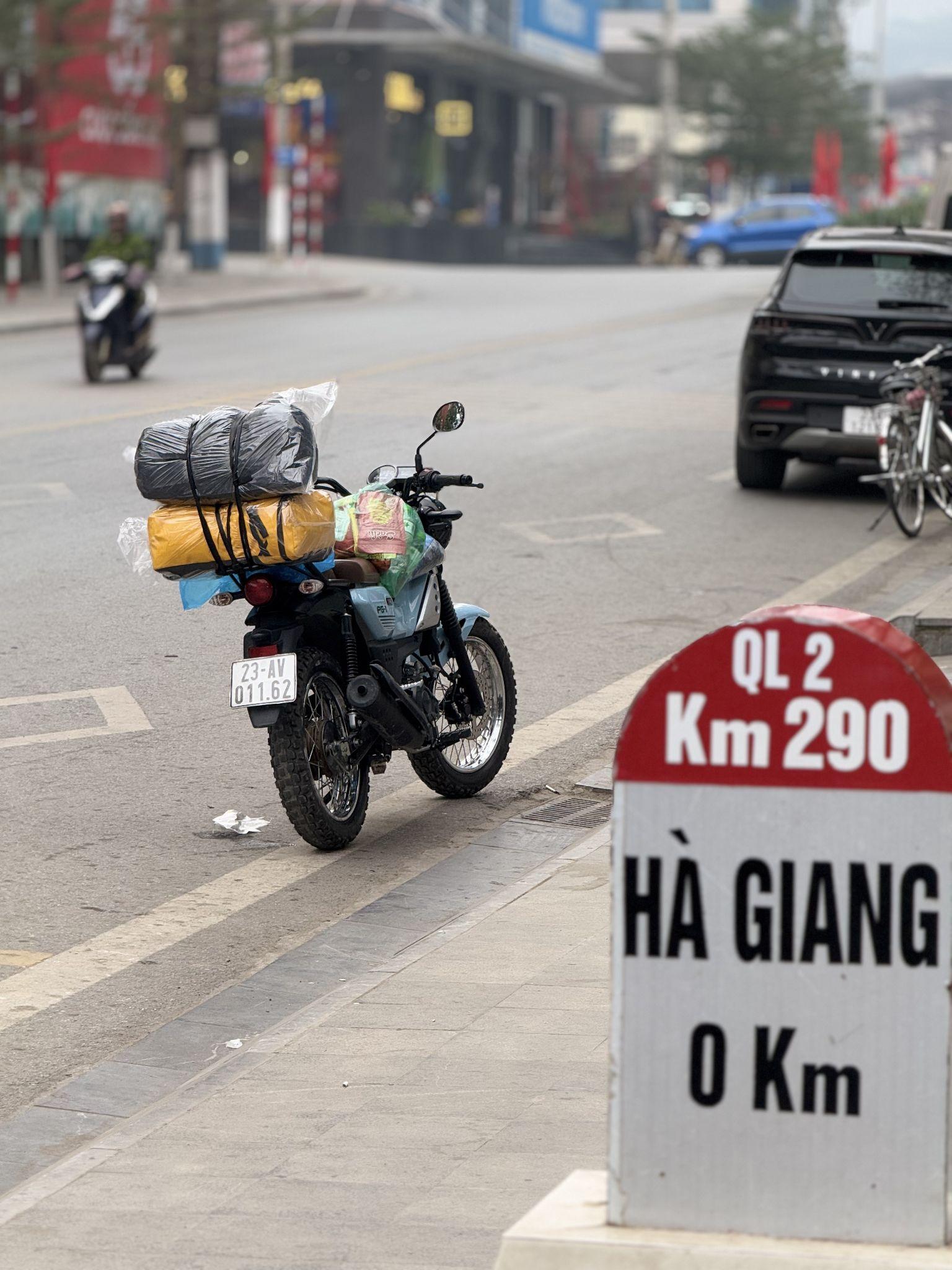
Ride Into the Soul of Vietnam: The Ultimate Guide to Ha Giang Loop Solo
2. What to Wear on the Ha Giang Loop (Seasonal Tips)
Dressing appropriately for Ha Giang’s variable climate maximizes comfort and safety throughout your journey. The region experiences four distinct seasons, each requiring specific clothing considerations.
Spring (March-May) brings mild temperatures with occasional rain. Mornings and evenings remain cool, especially at higher elevations like Dong Van and Lung Cu. Layer a t-shirt under a light fleece or jacket, with a waterproof outer layer easily accessible. Convertible pants that zip off into shorts offer flexibility as temperatures rise during the day.
Summer (June-August) features warm days but remains cooler than lowland Vietnam. Temperatures typically range from 25-30°C (77-86°F) during the day but can drop to 18-20°C (64-68°F) at night in the mountains. Lightweight, moisture-wicking clothing works best, but always carry a light jacket for evenings and higher elevations. This is also the rainy season, making quality rain gear essential.
Autumn (September-November) offers the most pleasant weather, with clear skies and cooling temperatures. Early autumn resembles summer, while November brings colder conditions requiring warmer layers. This season showcases Ha Giang’s famous buckwheat flowers and golden rice terraces, making it the most popular time to visit. Pack a mix of short and long-sleeved options with a medium-weight jacket.
Winter (December-February) brings genuinely cold conditions, especially at higher elevations. Temperatures can drop below 10°C (50°F), with occasional frost at the highest points. Thermal base layers, a warm fleece mid-layer, and a windproof jacket are necessary. Don’t underestimate the cold gloves, a warm hat, and a scarf make early morning rides much more comfortable.
Regardless of season, dress modestly when visiting ethnic minority villages. While riding gear is perfectly acceptable on the road, having a lightweight layer to cover shoulders and knees shows respect when visiting homes or cultural sites.
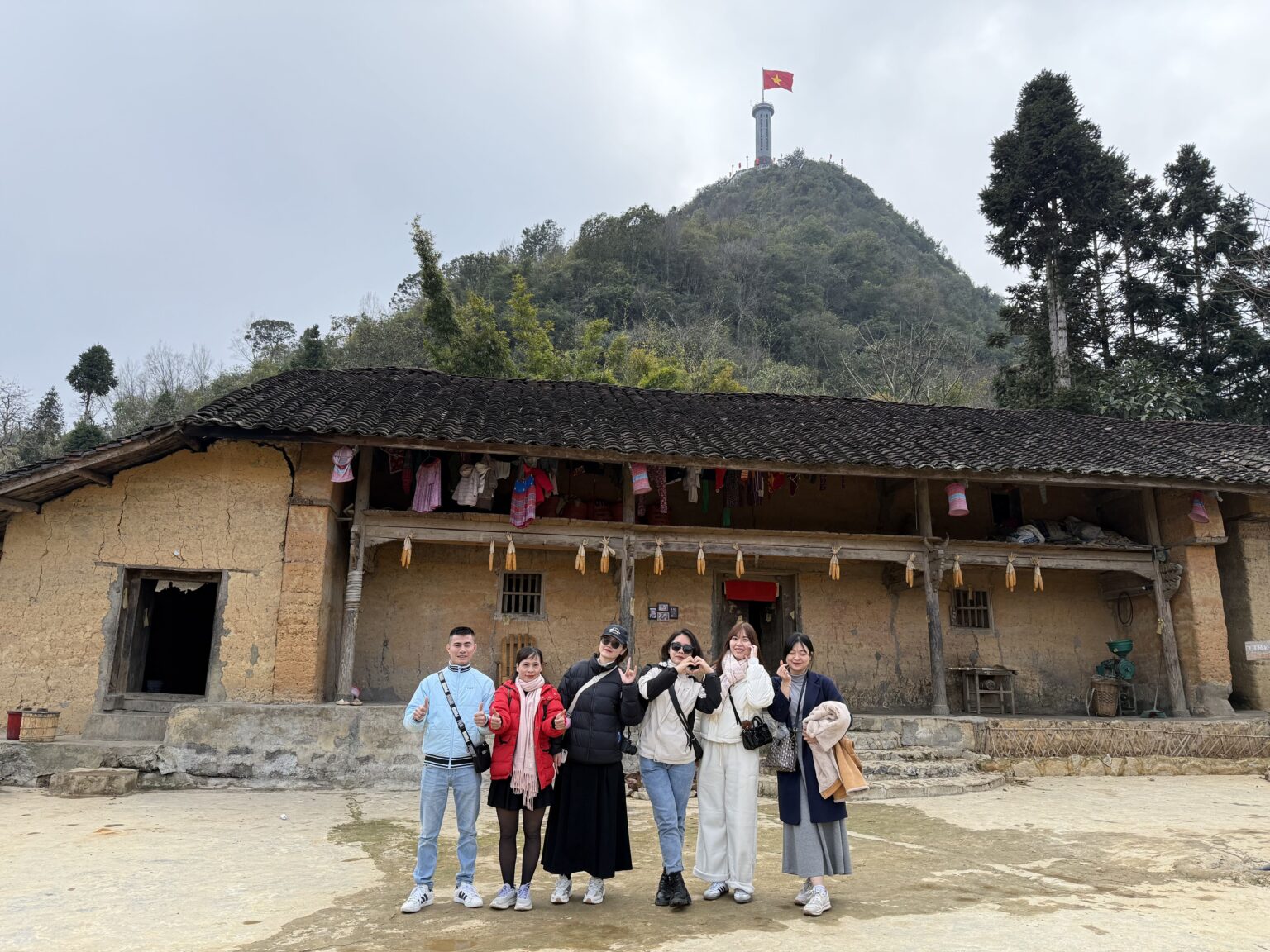
The Best Time to Visit Ha Giang: A Seasonal Guide to Flowers & Festivals
3. Packing Tips for the Ha Giang Loop
Efficient packing transforms your Ha Giang experience from logistically challenging to seamlessly enjoyable. These practical strategies help maximize limited space while ensuring you have everything needed for comfort and safety.
3.1 Organization Strategies
The constraints of motorbike travel demand thoughtful organization. Your main luggage should remain in Ha Giang City, with only essential items accompanying you on the loop.
Packing cubes create order within your backpack, separating clothing from electronics and toiletries. They compress items to save space and make finding specific items easier without unpacking everything. Color-coding cubes (clothing in one color, toiletries in another) further simplifies organization.
Waterproofing is crucial even outside rainy season. Line your backpack with a trash bag or use dry bags for electronics and documents. Many experienced travelers recommend having a separate small bag for valuables that stays with you during stops.
Daily access items should remain in external pockets or at the top of your bag. These include sunscreen, water bottle, snacks, and camera things you’ll want without digging through everything.
Distributed weight improves balance on the motorbike. Heavier items should sit lower and closer to your back, with lighter items toward the outside and top. Evenly distribute weight between left and right sides for stable handling.
3.2 Safety and Valuables
Protecting important items requires specific precautions in the remote and sometimes unpredictable environment of Ha Giang.
Document security means keeping physical and digital copies separate. Store originals in a waterproof pouch, with copies in another location. Many travelers email themselves digital copies as an additional backup.
Cash management involves dividing money between different locations rather than keeping it all in one wallet. Hide a reserve amount in a secure part of your luggage, separate from your daily spending money.
Electronics protection goes beyond waterproofing. Padding fragile items with clothing provides impact protection on bumpy roads. Remove batteries from devices not in use to prevent corrosion in humid conditions.
Emergency information should be accessible without technology. Write down important contacts, your accommodation details, and any medical conditions or allergies on a small card kept with your documents.
By implementing these organizational strategies, you’ll spend less time managing belongings and more time enjoying Ha Giang’s spectacular landscapes and rich cultural experiences.
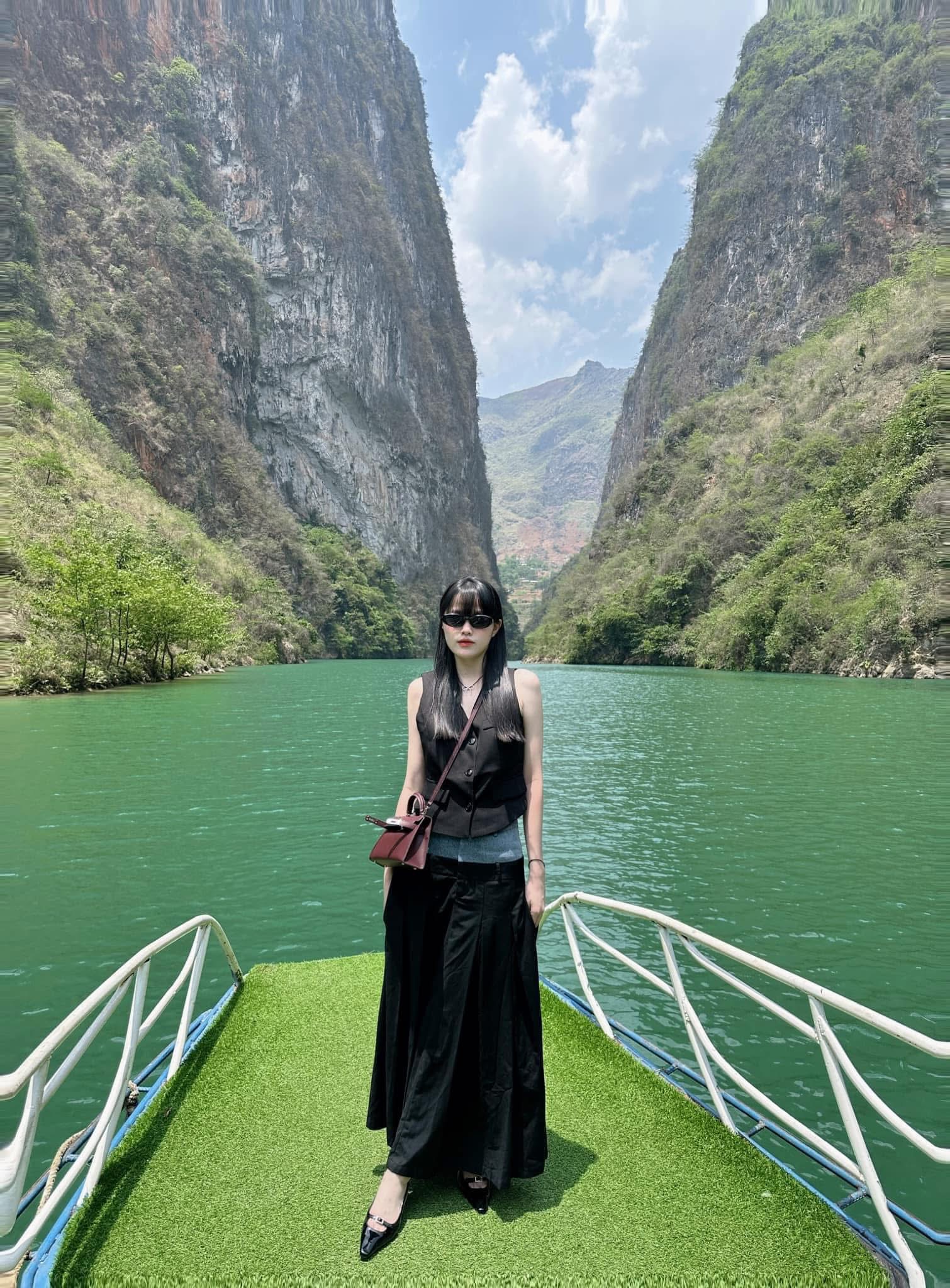
Ha Giang Loop cost guide 2025: real prices, tour options & savings
4. Frequently Asked Questions (FAQs)
Before you start your Ha Giang Loop journey, you might still have some practical questions about licenses, money, and daily logistics. Below are the most common traveler questions we receive at Phieu Travel each answered based on real experiences from those who’ve conquered the loop.
4.1 Do I need a driver’s license or IDP for the Ha Giang Loop?
Legally, riding a motorbike in Vietnam requires a Vietnamese license regardless of engine size. International tourists technically need a Vietnamese license obtained by converting a valid motorcycle license from their home country. In practice, many tourists ride with an International Driving Permit (IDP) alongside their home license.
While this doesn’t make it fully legal, it can help during police checks. More importantly, proper licensing affects insurance coverage most travel insurance policies won’t cover accidents if you’re riding illegally. For those uncomfortable riding themselves, easy rider services provide experienced local drivers who know the roads intimately.
4.2 Are laundry facilities or toiletries provided at accommodations?
Laundry facilities vary significantly along the Ha Giang Loop. Most hotels in Ha Giang City offer laundry services, but options become limited in smaller towns. Some homestays may offer basic washing for a small fee, but don’t count on consistent availability.
Regarding toiletries, basic soap is commonly provided, but shampoo, conditioner, and other items are rarely supplied, especially in homestays and budget accommodations. When provided, quality varies greatly. Bringing your own travel-sized toiletries ensures comfort and familiar products throughout your journey.
4.3 Do I need a first aid kit for the Ha Giang Loop?
A personal first aid kit is essential for the Ha Giang Loop. Medical facilities are extremely limited outside Ha Giang City, and those available often lack supplies or English-speaking staff. Your kit should include bandages, antiseptic, pain relievers, anti-diarrhea medication, motion sickness remedies, and any personal prescriptions.
Minor injuries like scrapes, blisters, or insect bites are common, and having immediate treatment options makes a significant difference in comfort. For serious emergencies, evacuation to Hanoi may be necessary another reason comprehensive travel insurance is crucial.
4.4 Should I bring cash or will cards work along the route?
Cash is absolutely necessary for the Ha Giang Loop. ATMs exist primarily in Ha Giang City, with very limited availability in Dong Van and Meo Vac. Credit cards are rarely accepted outside major hotels in Ha Giang City.
Bring enough Vietnamese dong for your entire journey approximately 500,000-1,000,000 VND ($20-40) per day covers accommodation, meals, fuel, and incidentals. Carry smaller denominations (50,000 and 100,000 VND notes) as many small vendors and homestays struggle with change for large bills.
4.5 What should I wear while riding a motorbike on the Ha Giang Loop?
Proper riding attire balances protection with comfort. At minimum, wear long pants, closed-toe shoes, and a long-sleeved shirt or jacket to protect against road rash in case of minor accidents. A quality helmet is essential rent from reputable companies that provide full-face options rather than the flimsy brain buckets sometimes offered.
Additional protection like riding gloves provides better grip and protection for your hands. If available, riding jackets with padding offer significantly improved safety. In hot weather, mesh riding gear allows airflow while maintaining protection. During cooler months or at high elevations, add layers beneath your protective gear to stay warm while maintaining safety.
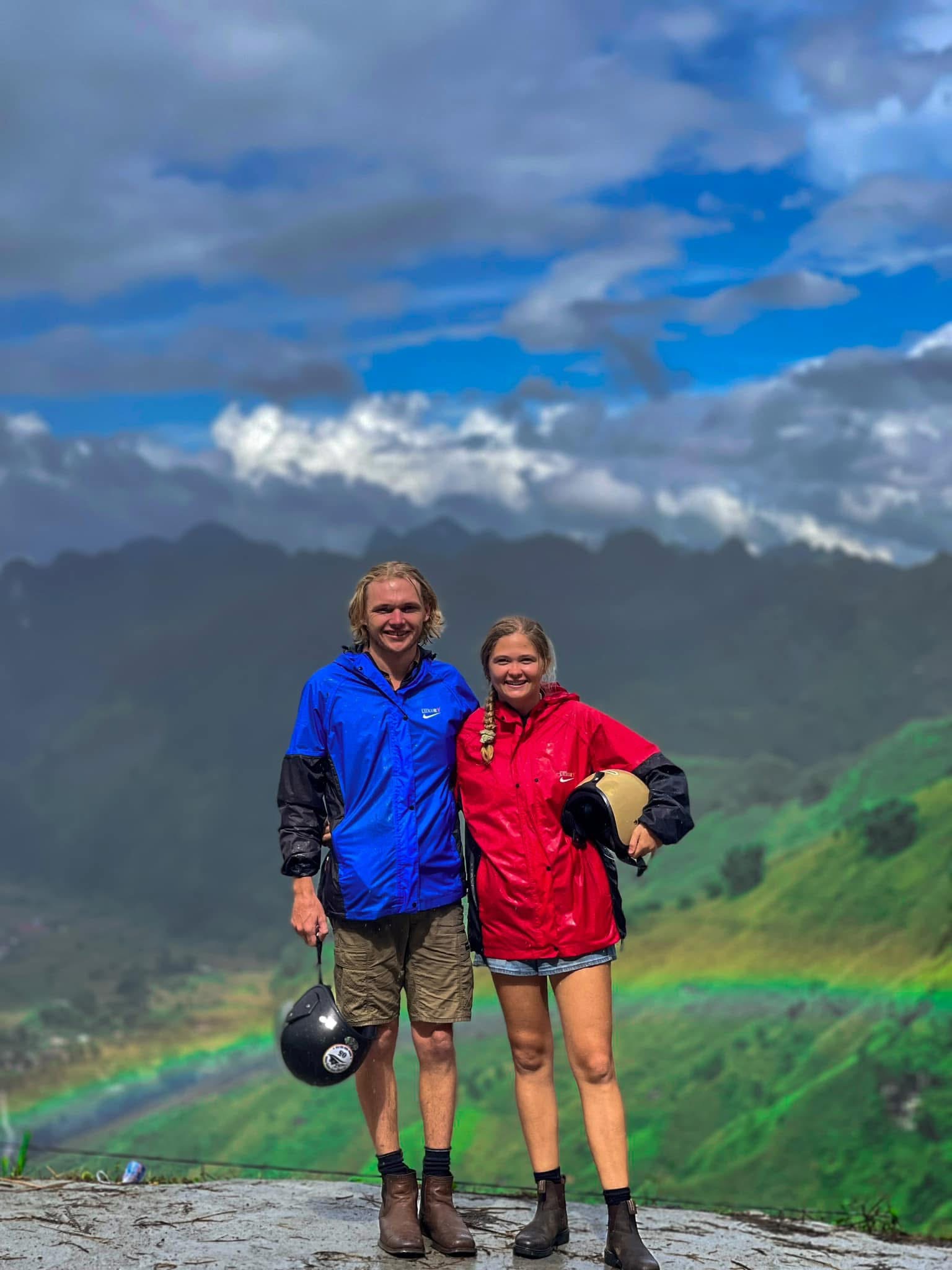
5. Final Thoughts: Packing Smart for the Ultimate Ha Giang Experience
The Ha Giang Loop represents one of Southeast Asia’s most rewarding travel experiences, combining spectacular landscapes with authentic cultural encounters. Proper preparation amplifies enjoyment while minimizing potential challenges along the way.
Remember that packing light doesn’t mean packing unprepared. Each item should serve a clear purpose, with particular attention to safety, weather protection, and basic comfort. The journey’s remote nature means self-sufficiency is crucial from first aid to navigation and electronic backups.
Seasonal considerations significantly affect your packing list. Summer travelers need lightweight, quick-dry options with excellent rain protection, while winter visitors should prioritize warm layers and wind protection. Regardless of season, the layering strategy remains your best approach to Ha Giang’s variable conditions.
As you prepare for this adventure, balance practicality with preparedness. Overpacking creates unnecessary bulk on your motorbike, while underpacking might leave you uncomfortable or exposed to preventable risks. The comprehensive list provided covers essential bases while leaving room for personal preferences.
At Phieu Travel, we’ve guided countless travelers through the magnificent landscapes of Ha Giang. Our experience shows that well-prepared travelers consistently enjoy their journey more fully, focusing on extraordinary experiences rather than logistical challenges. For personalized advice or guided tour options that eliminate packing guesswork, visit Phieutravel.com to learn more about our Ha Giang Loop experiences.
With the right items in your bag and an adventurous spirit, you’re ready to discover why the Ha Giang Loop has captured the imagination of travelers worldwide. Pack wisely, ride safely, and prepare to be amazed by what awaits you on Vietnam’s most spectacular motorbike adventure. Knowing exactly what to pack for the Ha Giang Loop is your first step toward an unforgettable journey through Vietnam’s breathtaking northern frontier.
Read more:
- Ha Giang’s Buckwheat Cake: Heritage, Flavor, and How to Try It
- Ha Giang Motorbike Loop: The Ultimate Tour with Phieu Travel
- The Ultimate Guide to Driving the Ha Giang Loop by Car from Hanoi
- Some Notes When Traveling Ha Giang Loop Tour by Car with Phieu Travel

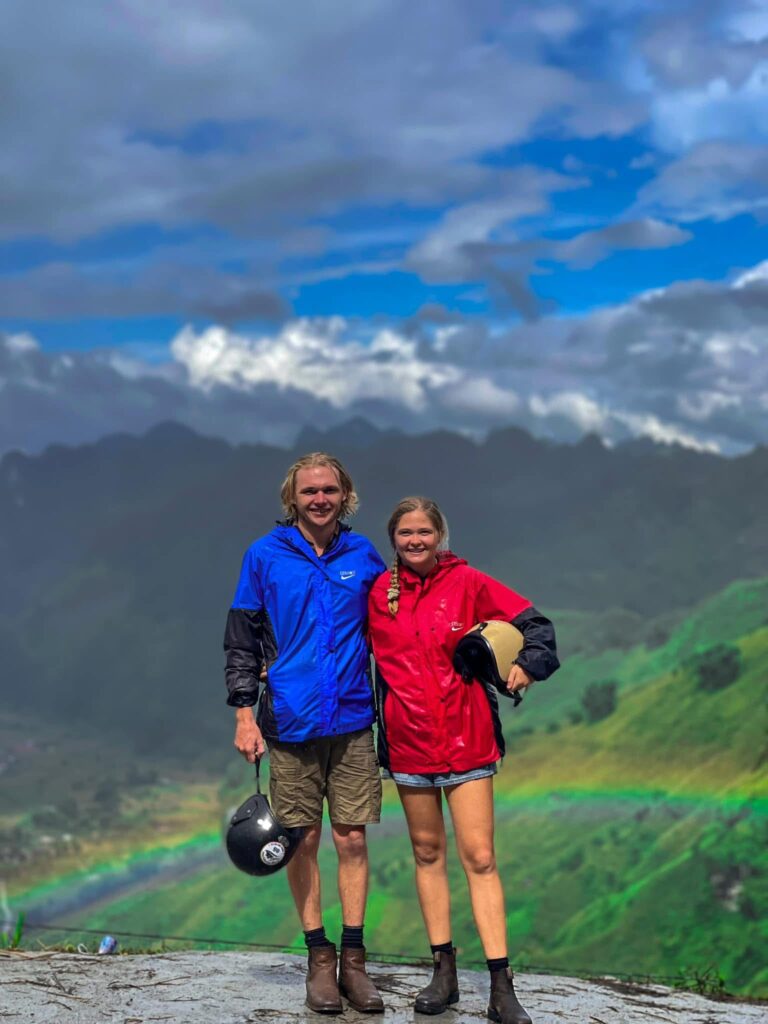
You Might Also Like
Ha Giang Weather in September: Complete Guide for Travelers
Exploring the magnificent Ha Giang Loop in September offers travelers a perfect balance of favorable[...]
Quan Ba Twin Mountains: Ha Giang’s Iconic Fairy Hills and Complete Travel Guide
The mystical Quan Ba Twin Mountains rise from the emerald valleys of Ha Giang like[...]
Vuong family mansion: the architectural marvel and cultural legacy of Ha Giang
Deep in Vietnam’s northern highlands, where mist-shrouded mountains meet terraced rice fields, stands a testament[...]
Ha Giang Loop Safety Tips: How to Ride Securely in Vietnam’s Northern Mountains
The Ha Giang Loop, with its winding mountain roads and breathtaking landscapes, offers one of[...]
The Ultimate Guide to the M-Shaped Curve on Ha Giang Loop
Vietnam’s remote northern province of Ha Giang hides a natural wonder that has captivated adventurous[...]
Most Beautiful Places to Visit in Vietnam: Essential Destinations and Insider Tips
Vietnam captivates travelers with its stunning landscapes, rich cultural heritage, and warm hospitality. From mist-shrouded[...]
Beyond the Beaten Path: Discovering Ha Giang Province in Northeast Vietnam
Ha Giang Province in Northeast Vietnam stands as one of the country’s last frontiers for[...]
Rainy season in Ha Giang: what to expect, when to go, and travel tips
Vietnam’s northern frontier reveals a different face during the rainy season, transforming Ha Giang’s limestone[...]